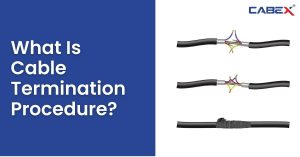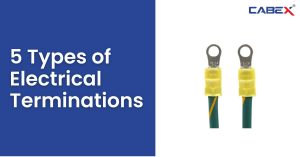Introduction
Which Cable Type Requires Specialized Equipment for Termination? When it comes to the world of cables and connections, not all types are created equal. While many cables can be terminated with relatively simple tools, there are certain cable types that demand specialized equipment for proper termination. In this article, we will explore these unique cable types and the reasons behind their need for specialized equipment during termination. So, if you’ve ever wondered, “Which cable type requires specialized equipment for termination?” – you’re in the right place!
Understanding Cable Termination
Before we dive into the specifics of cable types that necessitate specialized equipment for termination, let’s briefly understand what cable termination actually means. Cable termination refers to the process of connecting the end of a cable to a device, connector, or another cable. The goal is to establish a reliable and secure connection that maintains the integrity of the signal or power being transmitted.
Cable Types Requiring Specialized Equipment | Which Cable Type Requires Specialized Equipment for Termination?
In the world of cables and connections, not all cables are created equal when it comes to termination. Some cable types require specialized equipment to ensure a proper and reliable termination process. Let’s take a closer look at these cable types and why they demand specialized equipment for termination.
1. Fiber Optic Cables
Fiber optic cables are the pinnacle of high-speed data transmission, using light signals to carry information. Due to their intricate design and sensitivity to light, terminating fiber optic cables is a delicate process. Specialized equipment, such as fusion splicers and cleavers, are necessary to precisely align and fuse the individual fiber strands together. This ensures minimal signal loss and maximum data integrity.
2. Coaxial Cables
Coaxial cables are commonly used for cable television and broadband internet connections. Their structure includes a central conductor surrounded by insulating layers and shielding. Proper termination of coaxial cables requires careful stripping, trimming, and crimping. Specialized compression tools are used to attach connectors without signal leakage or loss. Due to their complex construction, using the right equipment is essential for reliable connections.
3. Ethernet Cables
Ethernet cables are the backbone of modern networking, transmitting data between devices and across the internet. While basic termination can be done with standard tools, high-performance applications demand greater precision. Specialized cable testers and crimping tools ensure accurate wire mapping and a secure connection. Errors in Ethernet cable termination can lead to network instability, underscoring the importance of specialized equipment.
4. High Voltage Power Cables
Cables carrying high voltage power require not only specialized equipment but also a strong focus on safety. Termination involves carefully stripping insulation, preparing conductors, and ensuring proper sealing. Hydraulic or manual crimping tools designed for high voltage applications are essential to establish connections capable of withstanding substantial electrical loads safely.
5. Audio/Video Cables
Cables used for audio and video applications, such as HDMI and VGA cables, play a crucial role in delivering clear and uninterrupted signals. Proper termination is vital to maintain signal quality. Specialized soldering irons and soldering stations are often employed to create clean, interference-free connections. Given the sensitivity of audio and video signals, using equipment designed to minimize signal disruption is imperative.
The Importance of Specialized Equipment
Whether you’re working with fiber optic cables, coaxial cables, Ethernet cables, or any other type of cable, using specialized equipment for termination is of paramount importance. Let’s delve deeper into why specialized equipment is so crucial in ensuring the success of cable termination.
1. Signal Integrity and Reliability
Maintaining signal integrity is a primary concern in any cable termination process. Cables are designed to transmit data, power, or signals accurately and efficiently. When termination isn’t done correctly, signal loss, interference, and disruptions can occur. This is particularly critical in applications like telecommunications, where even the slightest signal degradation can result in dropped calls or slow internet speeds.
Specialized equipment is designed with the precision required to handle different cable types. Whether it’s the fusion splicers for fiber optics or compression tools for coaxial cables, these tools ensure that the connectors are properly aligned and secured, minimizing signal loss and maximizing reliability.
2. Safety Considerations
Certain cables, such as high voltage power cables, carry significant electrical loads. Incorrect termination can lead to hazards like short circuits, electrocution, or even fires. Specialized equipment takes safety into account, providing features that prevent improper connections and ensure that insulation and shielding are appropriately handled.
For instance, hydraulic crimping tools designed for high voltage cables offer the necessary force to create a secure connection without damaging the cable’s insulation. By using these tools, technicians reduce the risk of accidents and create a safer working environment.
3. Consistency and Precision
Cable termination is often part of larger projects involving numerous connections. Consistency in termination is crucial for maintaining overall system performance. Specialized equipment ensures that each termination is executed with the same level of precision, reducing variability in the quality of connections.
Tools like cable testers and analyzers designed for specific cable types help technicians identify any errors or inconsistencies in the termination process. This proactive approach prevents faulty connections from causing problems down the line.
4. Time and Cost Efficiency
While specialized equipment might seem like an upfront investment, it pays off in the long run. Using tools that are tailored to the cable type reduces the chances of mistakes, rework, and the need to troubleshoot connectivity issues. This ultimately saves time and minimizes project delays.
Additionally, well-terminated cables are less likely to require maintenance or replacement due to connection problems. This means fewer disruptions to operations and reduced long-term costs.
5. Adaptation to Complex Cable Designs
Cable designs are becoming increasingly intricate to accommodate higher data rates, power transmission capabilities, and environmental factors. Specialized termination equipment is developed to handle the unique challenges posed by these complex cable designs.
For example, modern Ethernet cables often have multiple pairs of twisted wires within them. Using a specialized cable tester with wire mapping capabilities ensures that each wire pair is correctly connected, enhancing the overall performance of the network.
Conclusion:
In the world of cables, not all terminations are created equal. While some cables can be easily terminated with basic tools, others require specialized equipment to ensure optimal signal integrity, reliability, and safety. Fiber optic cables, coaxial cables, Ethernet cables, high voltage power cables, and audio/video cables are just a few examples of cable types that demand the use of specialized tools and techniques.
When it comes to cable termination, investing in the right equipment is a wise decision. Whether you’re setting up a network, installing audiovisual systems, or dealing with high voltage power, the use of specialized tools can make all the difference in achieving a successful and robust connection. So, the next time you find yourself wondering, “Which cable type requires specialized equipment for termination?” – remember that the cables mentioned above are among those that demand the utmost care and precision during the termination process.
FAQ:
What is termination as used in electrical cables?
Termination in electrical cables refers to the point where a cable is connected to a device or another cable, ensuring secure and efficient electrical contact for reliable transmission of power or signals.
How do you terminate electrical equipment?
To terminate electrical equipment, follow manufacturer guidelines for safe shutdown procedures. Disconnect power source, ensure proper grounding, and use appropriate protective gear. Consider professional assistance for complex systems.
What is a cable terminator?
A cable terminator is an electrical component used to end a transmission line, preventing signal reflections and ensuring proper signal integrity in communication and networking systems.
Which fiber cable is easy to terminate?
Single-mode fiber cables are generally easier to terminate due to their smaller core size and simpler light propagation, making connector alignment and splicing more straightforward than with multi-mode fibers.
What is the most commonly used method of wire termination?
The most common method of wire termination is crimping. It involves compressing a connector onto the wire using a crimping tool to establish a secure and conductive connection.






